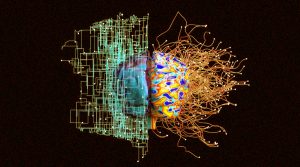Introduction
Artificial Neural Networks (ANNs) have emerged as a transformative force in the realm of machine learning, revolutionizing how we approach complex problem-solving. As versatile models inspired by the human brain, ANNs have the capacity to address a myriad of challenges across diverse fields such as image recognition, natural language processing, and autonomous vehicles. In this double-text article, we will delve deeper into the intricacies of ANNs, exploring their inner workings and highlighting their immense potential.
The Inner Workings of Artificial Neural Networks: Mimicking the Brain’s Functionality
At the core of ANNs lies a network of interconnected nodes, or neurons, arranged in layers. Neurons receive inputs, process them through complex mathematical operations, and pass the results to neurons in subsequent layers. This iterative process continues until the network produces an output. ANNs learn by adjusting the weights and biases of neurons based on training data, refining their ability to minimize the discrepancy between predicted and actual outputs.
The Power of Non-Linearity: Handling Complex Relationships
One of the most remarkable features of ANNs is their ability to capture and model intricate, non-linear relationships between inputs and outputs. Unlike traditional linear models, ANNs can navigate complex data spaces, making them highly suitable for tasks such as image recognition. By leveraging multiple layers and non-linear activation functions, ANNs excel at detecting patterns and nuances in data, unlocking new dimensions of understanding and performance.
Exploring the Types of Artificial Neural Networks: Adapting to Different Data Structures
The versatility of ANNs extends to their various architectures, each tailored to handle specific types of data. Feedforward neural networks, the most common type, process data in a unidirectional manner, from input to output. Recurrent neural networks, on the other hand, can tackle temporal dependencies by incorporating feedback loops, making them ideal for sequence data or time-series analysis. Convolutional neural networks, designed for data with grid-like structures, such as images, employ specialized operations to extract meaningful features.
Navigating Limitations and Future Directions: Challenges and Advancements
While ANNs offer unparalleled capabilities, they do face certain challenges. ANNs require substantial amounts of training data to learn effectively, and training and executing large networks can be computationally intensive. Furthermore, the interpretability of ANNs remains an ongoing area of research, as comprehending the reasoning behind their decisions can be complex. However, ongoing advancements in hardware and software, coupled with innovative research, are steadily addressing these limitations, propelling ANNs towards even greater potential.
The Path Forward: ANNs Shaping the Future of Artificial Intelligence
Artificial Neural Networks have emerged as a transformative force, driving breakthroughs in various domains and paving the way for the future of artificial intelligence. As hardware becomes more powerful and sophisticated, and software frameworks become increasingly accessible, ANNs are being embraced by researchers and practitioners across disciplines. With their ability to tackle complex problems and learn from vast datasets, ANNs are poised to unlock new realms of possibility, propelling us towards a future where intelligent systems are an integral part of our daily lives.
Conclusion
Artificial Neural Networks have revolutionized the landscape of learning and problem-solving, harnessing the power of interconnected neurons to tackle complex challenges. With their capacity to model non-linear relationships and adapt to different data structures, ANNs have proven indispensable across a broad spectrum of applications. While challenges remain, ongoing advancements continue to enhance their capabilities and address limitations. As we look ahead, Artificial Neural Networks are poised to shape the future of artificial intelligence, empowering us to push the boundaries of knowledge and innovation.


